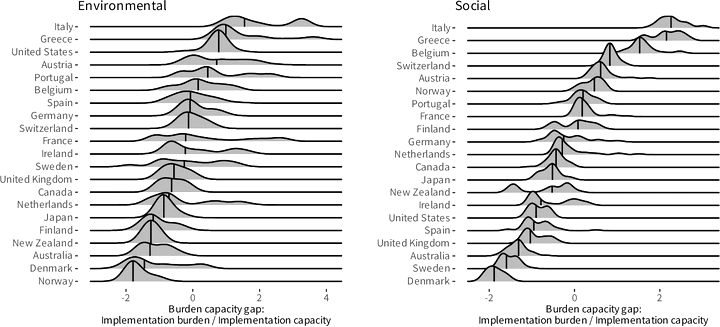Bureaucratic Quality and the Gap between Implementation Burden and Administrative Capacities
 Expected effects on policy portfolio diversity in the environmental sector.
Expected effects on policy portfolio diversity in the environmental sector.
Abstract
Democratic governments produce more policies than they can effectively implement. Yet, this gap between the number of policies requiring implementation and the administrative capacities available to do so is not the same in all democracies but varies across countries and sectors. We argue that this variation depends on the coupling of the sectoral bureaucracies in charge of policy formulation and those in charge of policy implementation. We consider these patterns of vertical policy-process integration an important feature of bureaucratic quality. The more the policymaking level is involved in policy implementation (top-down integration) and the easier the policy-implementing level finds it to feed its concerns into policymaking (bottom-up integration), the smaller the so-called “burden-capacity gap.” We demonstrate this effect through an empirical analysis in 21 OECD countries over a period of more than 40 years in the areas of social and environmental policies.
Online appendix
The online appendix contains an extension of the procedures and results presented in the paper; the JAGS code for the statistical model, and the ggmcmc output for convergence diagnostics of the model parameters.
Code and replication material
The whole set of code and data for the replication is available at the Harvard dataverse (doi: 10.7910/DVN/ZNRTYA).
Local copies are available for: